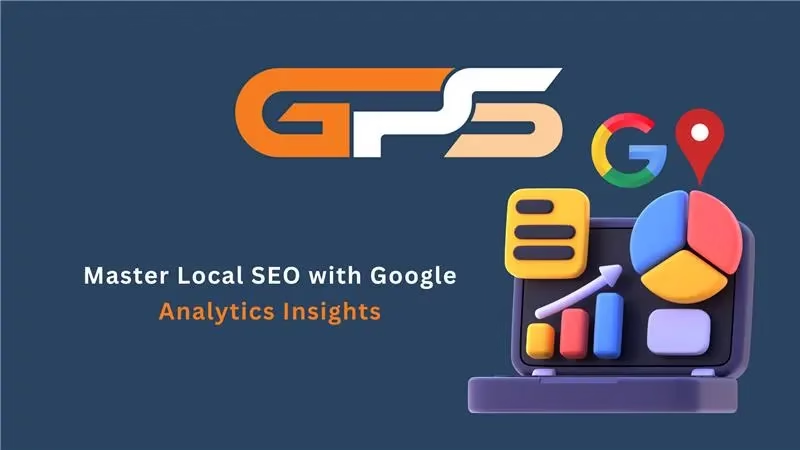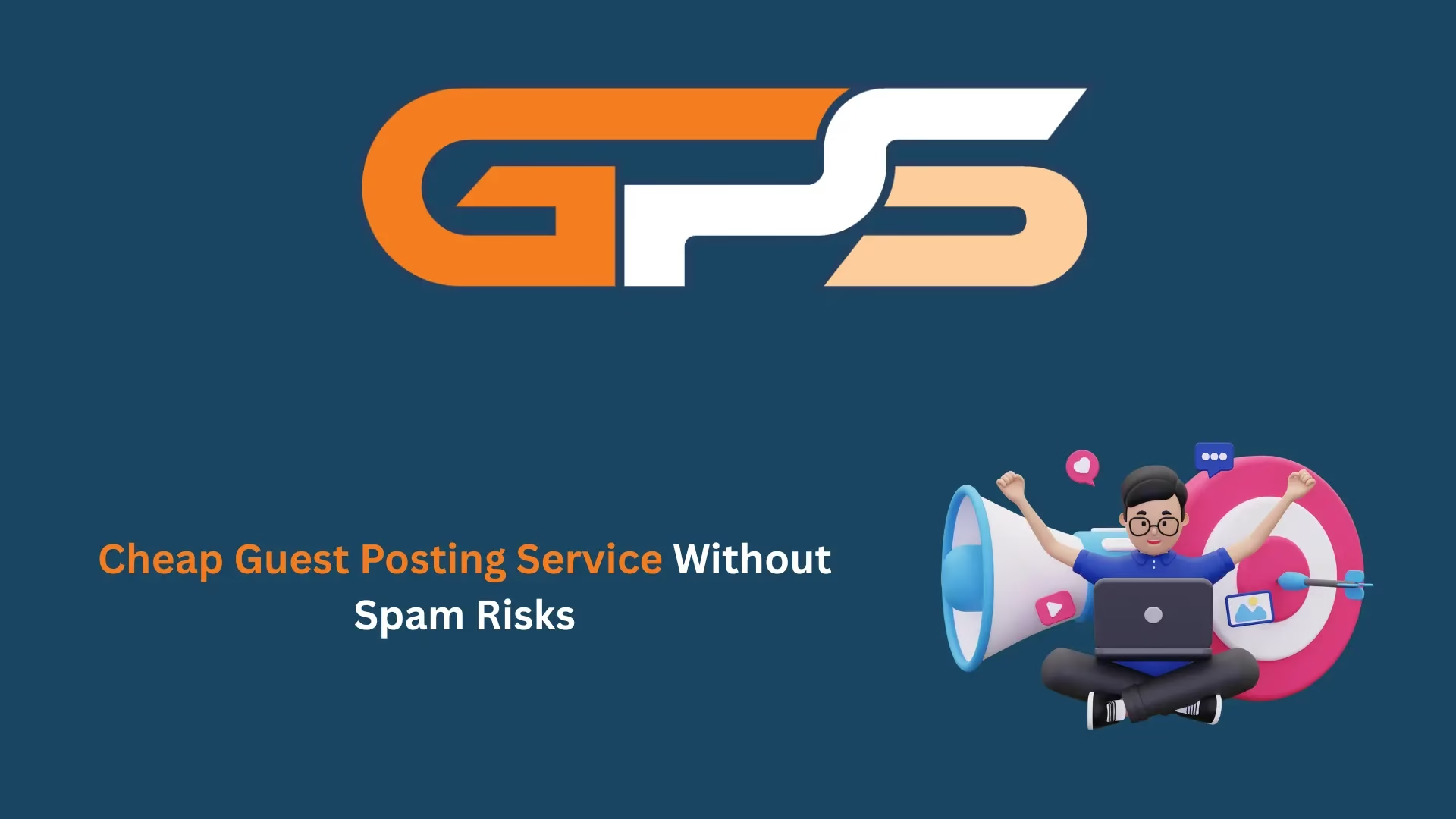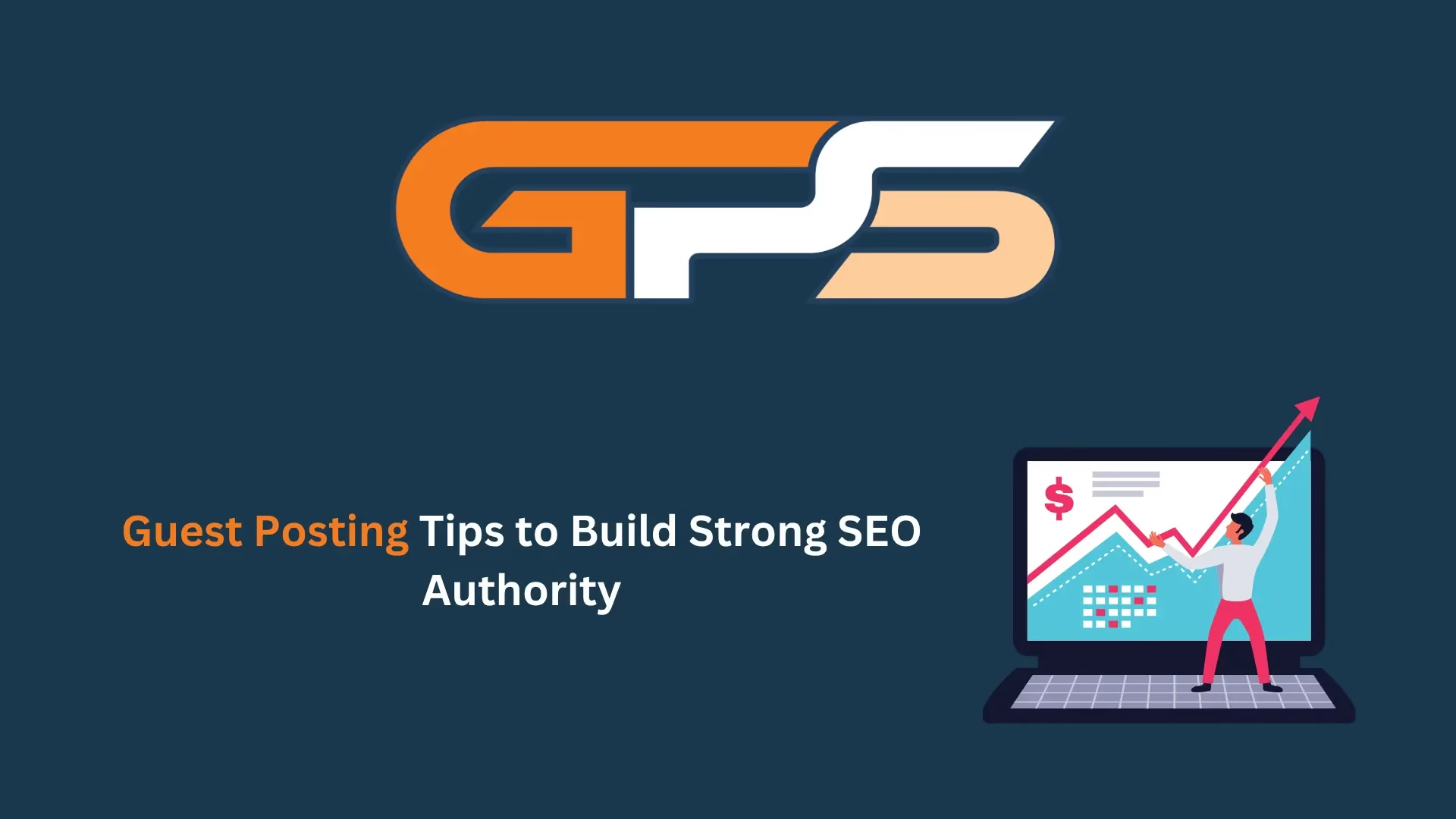Using Google Analytics for Local SEO

Using Google Analytics for local SEO focuses on optimizing a business’s online presence to attract more customers from relevant local searches. It plays a vital role in driving foot traffic and increasing visibility for local businesses. Google Analytics is a powerful tool that helps business owners understand how users find and interact with their website.
By analyzing metrics such as location, traffic sources, and user behavior, businesses can make informed decisions that enhance their local SEO strategy. Google Analytics not only identifies what’s working but also highlights areas that need improvement, helping to target the right audience effectively. In this guide, you’ll learn how to harness Google Analytics data to boost your local visibility and make smarter, data-driven marketing decisions. For more information, keep reading this blog!

Why Local SEO Needs Google Analytics
Track Local Traffic Sources
Google Analytics reveals where your website traffic comes from, organic search, social media, direct visits, or referrals, helping you focus on the most valuable channels for local SEO.
You can analyze traffic by geographic location to pinpoint which local areas drive the most engagement. This insight allows you to refine campaigns, focus on high-performing regions, and adjust your local content strategy accordingly.
Analyze Top-Performing Pages
By examining user behavior on specific pages, such as time spent, bounce rates, and conversion paths, you can identify which content resonates most with local audiences and optimize accordingly.
Top-performing pages often hint at user interests, helping you create similar content or enhance internal linking to lead users deeper into your site. This process not only boosts engagement but also supports better local ranking.
Combine with Google Search Console
Linking Google Analytics with Google Search Console allows you to track search terms and queries that bring users to your site, offering deeper SEO insights.
You’ll see how your pages perform in local search results, monitor click-through rates (CTR), and uncover keyword opportunities specific to your service area. This integration ensures your local SEO analytics strategy is built on actual search behavior, not assumptions.
Make Data-Driven Decisions
The combined data from both tools empowers local businesses to fine-tune their content, target the right keywords, and refine marketing efforts based on actual user intent and behavior.
You can identify which campaigns convert best, detect underperforming pages, and discover what truly matters to your audience. With these insights, your business can stay competitive and adaptive in an ever-evolving local search landscape.
Setting Up Google Analytics for Local SEO
To begin, visit analytics.google.com and create an account or log in.
- For Google Analytics 4 (GA4): This is the current default. Click “Admin” > “Create Property” > enter your business name, time zone, and currency. Follow the prompts to set up data streams (Web for websites).
- For Universal Analytics (UA): Though support is limited, if still using it, select “Show advanced options” during property setup, toggle on Universal Analytics, and enter your website URL. You can choose to set up both GA4 and UA.
Insert the Tracking Code Correctly
- After setup, you’ll receive a tracking code.
- For GA4, it’s called a Measurement ID (e.g., G-XXXXXXX). For UA, it’s a Tracking ID (e.g., UA-XXXXXXX).
- Place the code in the <head> section of every page on your site.
- This ensures accurate data collection across all pages, allowing you to track user behavior, bounce rates, and time spent on specific pages.
- Skipping any page may result in incomplete data and missed insights about user navigation, especially critical for local landing pages.
Connect Google Analytics to Google Search Console
To gain a full picture of local search performance, link your Google Analytics and Search Console accounts.
Go to Google Analytics > Admin > Property Settings > Scroll to “Search Console” and click “Adjust Search Console.” Add your verified website from Search Console here.
This integration enables you to see which local keywords bring users to your site, and how those users behave once they arrive, helping you optimize your local SEO strategy with data-driven precision.

Landing Page Insights: What’s Working and What Needs Improvement
To analyze which landing pages attract the most traffic, follow these steps in using Google Analytics for local SEO:
- Go to Behavior > Site Content > Landing Pages.
- This report shows the pages where visitors first enter your website.
- Check the Pageviews and Bounce Rate to see which pages are getting the most attention.
- Look for pages with high traffic and low bounce rates, as these are performing well. If certain local landing pages are bringing in visitors, you can focus on optimizing them further.
Optimize Underperforming Pages
For pages that aren’t performing well, such as those with low traffic or high bounce rates, you can make improvements:
- Improve Meta Descriptions: Rewrite your meta descriptions to make them more engaging and relevant to local search terms. Ensure they clearly describe what the page offers and include a call to action (CTA).
- Add Clear CTAs: Make sure each page has a clear and compelling CTA (e.g., “Call Now for Free Consultation” or “Get a Quote Today”). This encourages users to take action, increasing conversions.
- Enhance Content and Local Relevance: Update the content with location-specific keywords, testimonials, and local offers to make it more relevant to your target audience.
By regularly reviewing your landing page performance and optimizing underperforming pages, you can drive more targeted traffic and improve your local SEO results.
Analyzing Landing Pages and Specific Page Performance
To analyze which landing pages attract the most traffic, follow these steps in Google Analytics:
- Go to Behavior > Site Content > Landing Pages.
- This report shows the pages where visitors first enter your website.
- Check the Pageviews and Bounce Rate to see which pages are getting the most attention.
- Look for pages with high traffic and low bounce rates, as these are performing well. If certain local landing pages are bringing in visitors, you can focus on optimizing them further.
Optimize Underperforming Pages
For pages that aren’t performing well, such as those with low traffic or high bounce rates, you can make improvements:
- Improve Meta Descriptions: Rewrite your meta descriptions to make them more engaging and relevant to local search terms. Ensure they clearly describe what the page offers and include a call to action (CTA).
- Add Clear CTAs: Make sure each page has a clear and compelling CTA (e.g., “Call Now for Free Consultation” or “Get a Quote Today”). This encourages users to take action, increasing conversions.
- Enhance Content and Local Relevance: Update the content with location-specific keywords, testimonials, and local offers to make it more relevant to your target audience.
By regularly reviewing your landing page performance and optimizing underperforming pages, you can drive more targeted traffic and improve your local SEO results.

Understanding User Interactions and Behavior
Monitor User Interactions
To understand how users interact with your site, Google Analytics offers several key metrics:
- Scroll Depth: Use event tracking to see how far users scroll down your pages, which helps gauge engagement.
- Clicks: Track click events on key elements (like buttons or links) to see where users are most engaged.
- Time on Page: Check how long users stay on specific pages, which indicates interest or content quality.
These metrics give you insight into what captures user attention and what might need improvement.
Evaluate Engagement Rate and Bounce Rate
Two essential metrics to track:
- Engagement Rate: Higher engagement means users are spending more time interacting with your content.
- Bounce Rate: A high bounce rate means users leave quickly without interacting further, which could indicate that your content isn’t resonating.
Analyze these metrics in Google Analytics & SEO to identify potential issues with your content or design.
Tips to Reduce Bounce Rate
- Improve User Experience (UX): Ensure your site loads quickly, is mobile-friendly, and offers easy navigation.
- Enhance Content Relevance: Make sure the content matches the user’s search intent and offers clear, helpful information.
- Add Strong CTAs: Guide users to take action with clear and engaging CTAs, like “Learn More” or “Get a Free Estimate.”
Monitoring Click Through Rates and Meta Descriptions
Use Search Queries from Google Search Console
- Go to Google Search Console > Performance > Search Results.
- Identify search queries with low Click-Through Rates (CTR) despite having good impressions.
This indicates that your titles and meta descriptions might not be compelling enough to drive clicks.
Align Titles and Meta Descriptions with User Intent
- Titles: Craft titles that directly address user queries and contain relevant local keywords.
- Meta Descriptions: Write clear, engaging meta descriptions that summarize the page’s content and include a strong CTA.
This helps align your content with what users are looking for, boosting CTR.
![]()
Conversion Tracking and Marketing Optimization
- Go to Google Analytics > Admin > Goals.
- Set goals based on important actions: form submissions, phone calls, or direction clicks (for local businesses).
- Choose the type of goal (e.g., destination, event) and define the action that counts as a conversion.
Tracking conversions allows you to see how well your website is turning visitors into customers.
Tie Marketing Efforts Back to Site Behavior
- Use UTM parameters to track where your traffic is coming from (e.g., email campaigns, ads).
- In Google Analytics, go to Acquisition > Campaigns to see how your marketing efforts influence user behavior.
This connection between marketing campaigns and site behavior lets you understand what works, so you can optimize future campaigns.
Monitor Instant Traffic Surges
Google Analytics offers Real-Time reports that let you see what’s happening on your site at any given moment.
- Go to Real-Time > Overview in Google Analytics.
- Watch traffic spikes, especially after launching a social media post, email campaign, or local promotion.
This allows you to react quickly, ensuring that everything is working as expected and that there are no issues with user experience or site performance.
Benefits of Quick Response to Local Promotions or Events
When you see a surge in local traffic, such as after promoting a sale or hosting a local event, you can quickly:
- Adjust content: Optimize content or CTAs to keep users engaged.
- Fix issues: If there’s a technical glitch or a bounce rate spike, you can address it immediately.
- Enhance offers: Use real-time insights to push relevant promotions, keeping the audience engaged while the traffic is high.
Track Social Media Platforms for Relevant Traffic
Google Analytics helps you track which social media platforms are sending the most relevant traffic to your site.
- Go to Acquisition > Social > Network Referrals.
- Here you’ll see which platforms (Facebook, Instagram, LinkedIn, etc.) drive the most visitors to your site.
This data is crucial for focusing on the platforms that bring in high-quality traffic and engagement for your local business.
Learn Which Posts Drive Traffic and Conversions
By tracking Landing Pages and Goals within Google Analytics, you can determine which social media posts are most effective.
- Set up goals for key actions, such as form submissions or purchases.
- Use Campaign Tracking (UTM parameters) to identify which specific posts or campaigns lead to conversions.
By understanding what drives local engagement and conversions, you can tailor your social media strategy to focus on high-performing content and platforms.
Empower Your SEO Journey with a Guest Posting Solution
At Guest Posting Solution, we understand that successful SEO goes beyond traditional link-building. While acquiring backlinks is essential, it’s the strategic use of data that truly drives sustainable SEO growth. That’s why we leverage the power of Google Analytics to enhance your SEO efforts. By analyzing key metrics such as traffic sources, user engagement, and conversion rates, we help you craft more targeted, impactful guest posts that resonate with your audience and build your site’s authority.
Through Google Analytics, we provide insights into which content drives the most traffic and how your audience interacts with your site. This allows us to strategically place guest posts on relevant, high-authority websites that directly contribute to your local SEO. By continuously monitoring performance data, we ensure that each guest post is not just a link but a powerful tool for driving traffic, boosting engagement, and increasing conversions.
Partnering with Guest Posting Solution means aligning your marketing efforts with data-backed insights that refine your approach to local SEO. We combine our expertise in guest posting with Google Analytics to deliver results that matter: improved search rankings, greater local visibility, and a stronger online presence.

Case Studies Guest Posting Solution
Local Bakery’s SEO Boost through Strategic Guest Posting
Request:
A local bakery wanted to increase its online visibility and attract more local customers through improved search rankings. They were struggling with low website traffic and weak domain authority.
Solution:
We used Google Analytics to analyze their traffic sources and user behavior. By identifying key demographic trends, we strategically placed guest posts on local food and lifestyle blogs. These guest posts were tailored to highlight the bakery’s unique offerings and include locally relevant keywords.
Result:
Within three months, the bakery experienced a 40% increase in organic traffic. Their search rankings for local keywords improved significantly, and the bakery saw a 25% boost in in-store visits, directly linked to the content in the guest posts.
Real Estate Agency Expands Local Reach
Request:
A real estate agency wanted to improve its online presence in a competitive local market. They needed better rankings for location-specific keywords and higher engagement from potential homebuyers.
Solution:
Using Google Analytics, we identified which landing pages were underperforming and which keywords drove the most traffic. We then partnered with local real estate influencers and websites for guest posts. The content was crafted to address common buyer concerns, using data-driven keywords that aligned with local search queries.
Result:
After implementing the guest posts, the agency saw a 30% increase in website traffic, a 20% boost in lead generation, and a noticeable improvement in their rankings for highly competitive local real estate keywords.
Fitness Center Gains Authority and Leads
Request:
A fitness center sought to increase awareness and attract more local clients. They needed to rank better for terms like “local gym” and “fitness center near me” while improving brand credibility.
Solution:
We used Google Analytics to analyze user behavior and optimize their content strategy. Guest posts were strategically placed on local wellness and fitness blogs, emphasizing the gym’s unique features, such as personalized training programs and local community involvement.
Result:
In just two months, the fitness center experienced a 50% increase in organic traffic, a 35% rise in memberships, and an enhanced online reputation with backlinks from high-authority local websites.
Local Auto Repair Shop’s Competitive Edge
Request:
A local auto repair shop was struggling to stand out against bigger competitors in the area. They wanted to improve their search visibility and attract more customers to their shop.
Solution:
Using Google Analytics, we identified the shop’s most popular services and local search terms. We then secured guest posts on automotive blogs and local service directories, focusing on repair tips, customer testimonials, and special offers.
Result:
The shop saw a 45% increase in local traffic and a 30% increase in service bookings, resulting in higher conversions and improved local SEO performance.

Conclusion
Summarize how Google Analytics strengthens local SEO through insights on traffic sources, engagement rate, and conversion rate. Encourage businesses to use this free tool to make data-driven improvements.
FAQs
Q1: How can I track user interactions with my local service pages?
Use event tracking and behavior reports in Google Analytics to understand how users navigate your pages.
Q2: What is the best way to reduce bounce rate?
Ensure content relevance, improve page speed, and use clear CTAs.
Q3: How do I link Google Search Console to Google Analytics?
Go to the Admin section in GA, select Property Settings, and connect your Search Console account under Property Settings.





